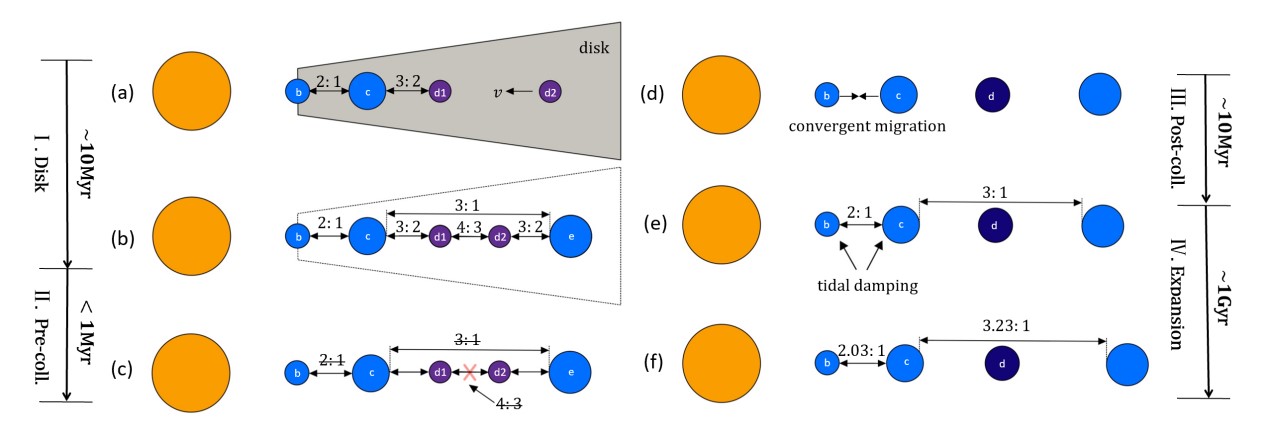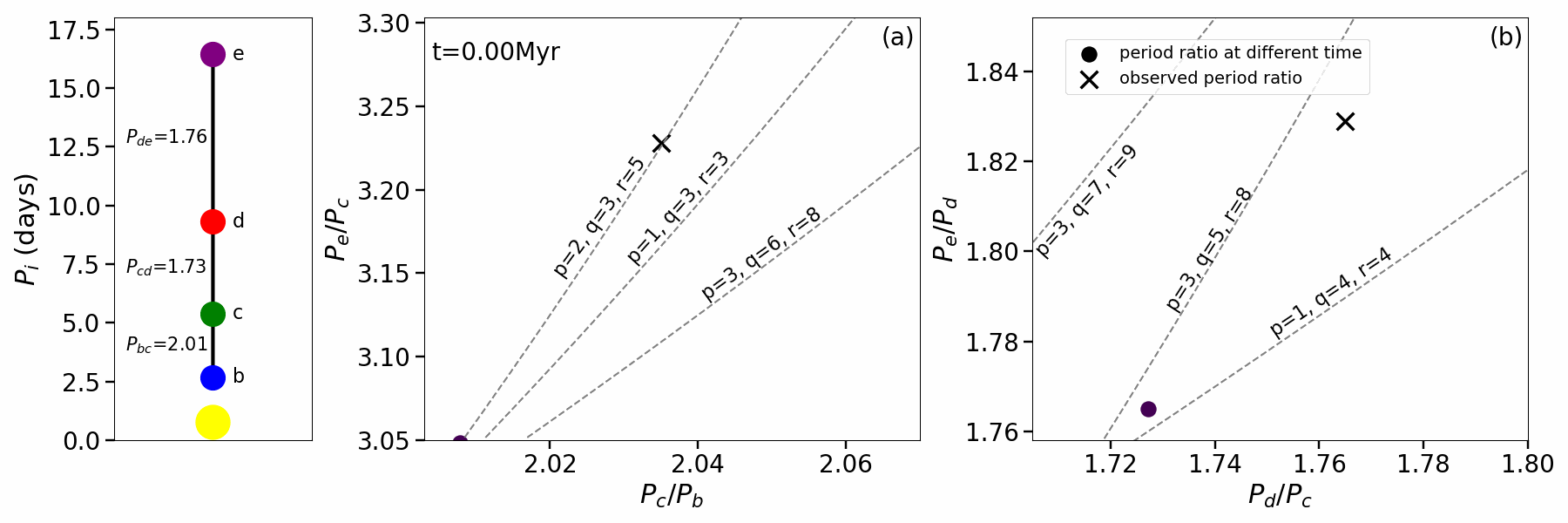Kepler-221 is a G-type star hosting four planets. Among these planets, three of them -- b, c, and e – have their orbits following a rhythm known as a three-body resonance. This means that their orbital periods are close to integer, which resembles synchronized dancers following the same beat. For every six orbits of planet b, planet c completes three, and planet e completes one. But there’s a twist to Kepler-221’s story. The intermediate planet d does not fit this rhythm. Instead of continuing the resonance chain, it breaks the pattern, challenging our understanding of how such systems evolve.
To unravel this mystery, an international research team led by Tian Yi, a PhD student at the department of Astronomy, explored how the Kepler-221 planetary system evolved over time. They proposed that Kepler-221 originally hosted five planets, all locked in a perfect resonance chain (see Figure 1, panel b). Such resonance chains often form in the formative stages of planetary system when planets are embedded in the gas and dust disk surrounding their star (panel a). However, any massive object (e.g., a large comet) from the outer system that penetrates the inner system has the potential to break the resonance chain and to make the planets orbits dynamically unstable. The authors calculate that such an instability led to a dramatic event: two of the planets (d1 and d2) collided, merging into what is now known as planet d (panel d). This collision left planet d as an “odd ball” while the other three planets, b, c, and e, still stayed close to resonance. The three-body resonance eventually re-established (panel e) and the planets expanded to the present-day period ratio (panel f).

Fig. 1 A Sketch of Our Kepler-221 Evolution Model
This picture was verified with N-body simulations, highlighting additional constraints. First, the three-body resonance between planets b, c, and e can reform only under convergent migration, where planets move closer together over time. Second, planet d plays a crucial role in the expansion phase after resonance reformation through a mechanism called resonance crossing, constraining the mass ratio among the planets. Figure 2 illustrates the orbital expansion in the period ratio planes for a case with appropriate initial mass ratios. The planets (the black dot) successfully expand to the observed period ratio (the black crosses), while avoiding potentially destructive three-body resonance locations.

Fig. 2 Orbital Expansion Phase constrains the planet masses
This model not only explains the unusual orbital arrangement of Kepler-221 but also sheds light on the broader processes that shape planetary systems. Resonance-breaking events, like the one proposed for Kepler-221, may be more common than previously thought. Other systems, such as Kepler-402 and K2-138, show similar patterns of partial resonance chains, suggesting they may have undergone similar histories. By studying these systems, a deeper understanding is gained of how planets form, migrate, and interact over billions of years.
This study has been accepted for publication in The Astronomy & Astrophysics. Tsinghua DoA graduate student Tian Yi is the first author, and Associate Professor Chris Ormel is the corresponding author. Other coauthors include Shuo Huang from Tsinghua University, and Antoine Petit from Université Cote d’Azur. The work of the Tsinghua team was supported by the National Natural Science Foundation of China.
Paper link:


